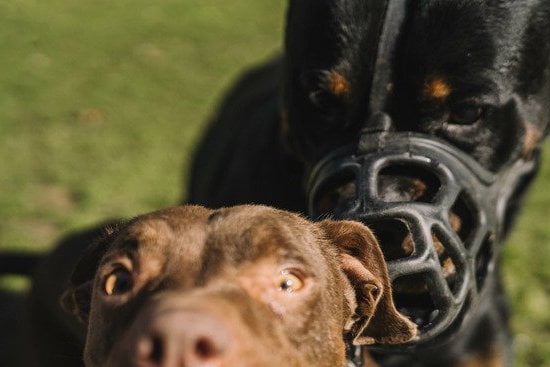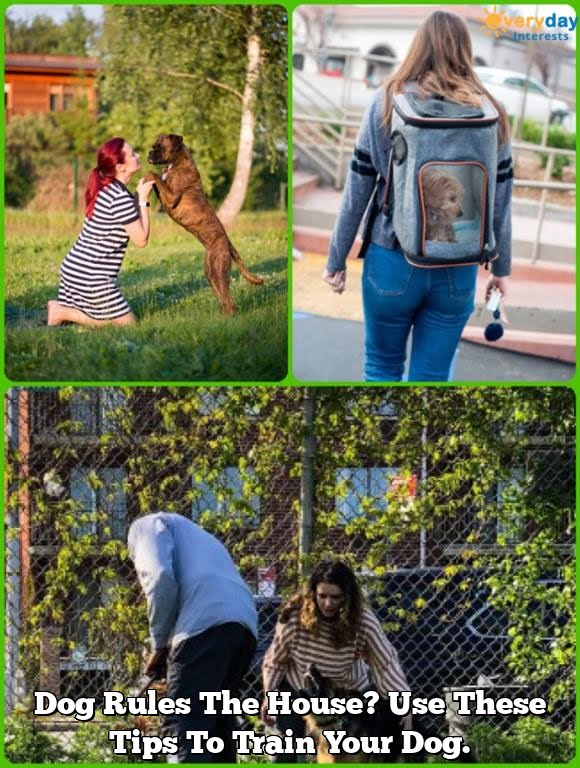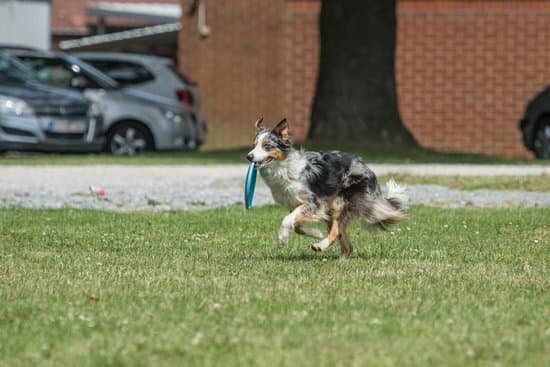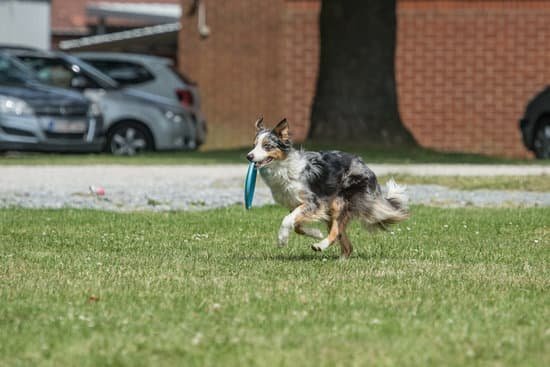Are you wondering how to train your Pointer dog effectively? Look no further. Pointer dogs are a beloved breed known for their intelligence, athleticism, and hunting abilities. In this guide, we will delve into the essential aspects of training a Pointer dog to become a well-behaved and obedient companion. Understanding the history and characteristics of the Pointer breed is crucial in tailoring an effective training regimen that suits their unique needs.
The Pointer dog breed has a rich history dating back to the 17th century when they were primarily bred as hunting companions. Their keen sense of smell, strong prey drive, and remarkable speed make them excellent partners for hunters. As pets, Pointers are loyal, friendly, and energetic dogs that thrive on mental and physical stimulation. Recognizing these traits will help you tailor your training approach to keep your Pointer engaged and happy.
When it comes to training Pointer dogs, choosing the right method is key to success. Whether you opt for traditional obedience training or positive reinforcement techniques, it’s important to consider your dog’s individual temperament and learning style.
By understanding the history and characteristics of the Pointer breed, you can select a training method that aligns with their natural instincts and abilities. With patience, consistency, and the right tools in place, you can embark on an enriching journey of training your Pointer dog to reach their full potential.
Choosing the Right Training Method for Your Pointer Dog
Understanding Your Pointer Dog’s Needs
Before diving into training your Pointer dog, it is crucial to understand the breed’s unique characteristics and needs. Pointers are known for their high energy levels, intelligence, and strong hunting instincts. Therefore, when choosing a training method, consider these traits to ensure successful results. Pointers thrive on mental stimulation and physical exercise, so incorporating these elements into their training regime is essential.
Positive Reinforcement vs. Punishment-Based Training
When determining the right training method for your Pointer dog, it is important to choose an approach that aligns with their temperament and behavior. Positive reinforcement training techniques have proven to be highly effective with Pointer dogs. This involves rewarding desired behaviors with treats, praise, or toys. Punishment-based methods can have negative consequences and may result in fear or aggression in your dog.
Consistency Is Key
Regardless of which training method you choose for your Pointer dog, consistency is paramount for success. Establishing clear rules and boundaries from the beginning will help your dog understand what is expected of them. Consistent training sessions, routines, and positive reinforcement will create a strong bond between you and your Pointer dog while fostering good behavior habits.
By understanding your Pointer dog’s needs, choosing the right training method that suits their temperament, and maintaining consistency throughout the training process, you can effectively train your furry companion and strengthen the bond between you both. Remember that every dog is unique, so be patient and tailor your training approach to best fit your Pointer’s individual personality and behavior patterns.
Essential Training Equipment for Pointer Dogs
Pointer dogs are known for their intelligence, athleticism, and natural hunting instincts. When it comes to training these energetic and independent dogs, having the right equipment is essential. Here are some must-have items to effectively train your pointer dog:
- Collar and Leash: A sturdy collar and leash are basic tools for any dog owner. When selecting a collar for your pointer dog, consider one that is comfortable but also durable enough to handle their strength.
- Treats: Positive reinforcement is key when training a pointer dog. High-value treats can be used to reward good behavior and motivate your dog during training sessions.
- Clicker: A clicker can be a useful tool for marker training with pointer dogs. The distinct clicking sound helps communicate to your dog when they have performed the desired behavior correctly.
- Training Whistle: Pointer dogs are known for their keen sense of smell and ability to track scents over long distances. A training whistle can help get your pointer’s attention from afar during outdoor training sessions.
Training equipment plays a crucial role in teaching your pointer dog basic commands like sit, stay, come, heel, and more advanced skills like agility or obedience exercises. With the right tools, patience, consistency, and positive reinforcement techniques, you can successfully train your pointer dog to be well-behaved and obedient.
Remember that every dog is unique, so it’s important to adapt your training methods based on the individual personality and learning style of your pointer dog. By using the proper equipment and following proven training techniques specifically designed for pointers, you can build a strong bond with your canine companion while helping them reach their full potential as a well-trained member of your family.
Whether you’re starting with basic obedience commands or moving on to more advanced training activities like agility courses or hunting skills development, having the right equipment is crucial in ensuring successful outcomes in how to train Pointer Dog effectively.
Basic Training Commands for Pointer Dogs
The key to a well-trained pointer dog lies in mastering basic commands early on in their training. Here are some essential commands that every pointer dog owner should focus on when teaching their furry companion:
- Sit: Teach your pointer dog to sit by holding a treat above their nose and moving it back over their head. As they follow the treat, their natural response will be to sit down. Once they do, praise them and give them the treat.
- Stay: Training your pointer dog to stay is crucial for situations where you need them to remain in one place. Start by asking your dog to sit, then hold out your hand like a stop sign and say “stay.” Gradually increase the amount of time they stay before rewarding them.
- Come: Teaching your pointer dog to come when called is essential for their safety. Begin by using a long line leash in a controlled environment. Call your dog’s name followed by “come” and gently reel them in if they don’t respond immediately. Reward them with praise or treats once they come to you.
Consistency is key when training your pointer dog on these basic commands. Practice these commands daily for short periods of time to reinforce their understanding and ensure that they respond reliably in various situations.
Remember, patience and positive reinforcement are crucial when teaching your pointer dog these basic commands. By establishing clear expectations and using rewards effectively, you can successfully train your pointer dog to be well-behaved and responsive.
Positive Reinforcement Training Techniques for Pointer Dogs
Pointer dogs are intelligent, eager to please, and highly energetic. When it comes to training them, positive reinforcement techniques are highly effective. Positive reinforcement involves rewarding good behavior to encourage the dog to repeat it. This method is not only successful with pointer dogs but also helps strengthen the bond between the dog and the owner.
To train a pointer dog effectively using positive reinforcement, start by identifying their favorite treats or toys as rewards. Use these incentives during training sessions to motivate your pointer dog to follow commands. Whether it’s sitting, staying, or coming when called, always reward your pointer dog immediately after they perform the desired behavior to reinforce it positively.
Consistency is key when using positive reinforcement training techniques with pointer dogs. Set clear expectations for your dog and stick to them. Be patient and understanding as you work with your pointer dog, as every dog learns at their own pace. By creating a positive and encouraging learning environment, you can effectively train your pointer dog while strengthening the bond between you both.
| Training Technique | Description |
|---|---|
| Positive Reinforcement | Rewarding good behavior with treats or toys to encourage repeat actions |
| Consistency | Setting clear expectations and sticking to them during training sessions |
| Patient and Understanding | Being patient with your pointer dog’s learning pace and maintaining an encouraging environment |
Socialization Tips for Pointer Dogs
Socialization is a crucial aspect of training for Pointer dogs, as it helps them become well-rounded and confident animals. When it comes to socializing your Pointer dog with people, start early and expose them to a variety of individuals, including children, adults, and different ethnicities. Encourage positive interactions by rewarding good behavior with treats or praise. It’s important to monitor their body language and reactions to ensure they are comfortable in these social situations.
Introduction to Socializing Your Pointer Dog
Introducing your Pointer dog to other animals is also an essential part of their socialization. Whether you have other pets at home or take them to the dog park, it’s important for them to learn how to interact appropriately with different species. Start slow and supervise their interactions closely, especially if they are meeting new animals for the first time. Use positive reinforcement techniques to encourage good behavior and discourage any aggressive tendencies.
Tips for Successful Socialization
Consistency is key when socializing your Pointer dog with people and other animals. Make sure to expose them to various environments, such as busy streets, parks, or outdoor events, so that they can adapt well in different settings. Reward calm behavior around strangers and other pets while also correcting any inappropriate actions gently but firmly.
Remember that every dog is unique, so be patient and adjust your training methods according to your Pointer’s individual needs and responses. With time and consistent effort, your Pointer dog will grow into a well-socialized and friendly companion.
Advanced Training for Pointer Dogs
The advanced training for Pointer dogs involves building on the basic obedience commands they have learned and challenging them with more complex tasks. One of the most popular advanced training activities for Pointer dogs is agility training. This type of training involves navigating obstacle courses that test their speed, agility, and coordination. It is not only a great physical exercise for Pointer dogs but also strengthens the bond between the dog and its owner.
In addition to agility training, advanced obedience training is crucial for Pointer dogs. This includes teaching them advanced commands such as “heel,” “leave it,” and “drop it.” Advanced obedience training helps to ensure that your Pointer dog listens to you in any situation, whether at home or in a crowded public place. Consistency and patience are key when working on these commands with your Pointer dog to achieve success.
Furthermore, some owners may choose to engage their Pointer dogs in specialized activities based on their interests and strengths. Some Pointers excel in hunting sports like field trials or competitive events like rally obedience.
Participating in these activities not only provides mental stimulation for your dog but also allows them to showcase their natural abilities. It’s essential to explore different options and find what resonates best with your Pointer dog’s personality and energy level when deciding on advanced training pursuits.
| Advanced Training Activities | Benefits |
|---|---|
| Agility Training | Tests speed, agility, coordination; strengthens bond with owner |
| Advanced Obedience Commands | Ensures responsiveness in all situations; requires consistency and patience |
| Specialized Activities (e.g. hunting sports, rally obedience) | Mental stimulation, showcasing natural abilities; tailored to dog’s interests |
Dealing With Common Behavioral Issues in Pointer Dogs
One of the first steps in addressing barking and digging behavior in Pointer dogs is identifying the root cause. Barking can be a form of communication, boredom, or alerting behavior, while digging may stem from hunting instincts or a way to alleviate stress. By understanding why your dog is exhibiting these behaviors, you can tailor your training approach accordingly.
To train a Pointer dog to curb excessive barking, start by teaching the “quiet” command using positive reinforcement techniques. Reward your dog when they stop barking on command and redirect their attention to a toy or activity. Consistency is key in reinforcing this behavior.
Similarly, for digging behavior, provide your dog with a designated digging area filled with sand or dirt where they are allowed to dig freely. Encourage and praise them when they dig in this designated spot instead of inappropriate areas.
In addition to specific commands for barking and digging, regular exercise and mental stimulation are crucial for preventing behavioral issues in Pointer dogs. These active and intelligent dogs require plenty of physical activity and mental challenges to keep them engaged and prevent boredom-related behaviors. By incorporating training sessions into their daily routine and providing interactive toys, you can help channel their energy in a positive direction while strengthening your bond with your loyal Pointer companion.
Maintenance Training for Pointer Dogs
In conclusion, training a Pointer dog requires dedication, consistency, and follow-through. It is essential to understand the history and characteristics of the breed to tailor your training methods effectively. Choosing the right training method that aligns with your Pointer’s personality and learning style is crucial for success. Additionally, having the necessary training equipment and knowledge of basic commands such as sit, stay, and come are fundamental building blocks for further training.
Positive reinforcement techniques have proven to be highly effective in training Pointer dogs, encouraging good behavior and creating a strong bond between you and your pet. Socialization is also key in raising a well-rounded Pointer dog, ensuring they are comfortable meeting new people and other animals. Advanced training in agility and obedience can further enhance their skills and mental stimulation.
As with any breed, behavioral issues may arise in Pointer dogs such as barking or digging. Addressing these issues with patience and positive reinforcement can help correct unwanted behaviors. Maintenance training is essential for ongoing success, requiring consistency in your approach and follow-through with commands. By understanding the unique needs of Pointer dogs and consistently engaging in training activities, you can ensure a well-behaved and happy canine companion.
Frequently Asked Questions
Are Pointer Dogs Easy to Train?
Pointer dogs can be relatively easy to train, as they are intelligent and eager to please. However, their strong prey drive and independent nature can sometimes make training a bit challenging. Consistent positive reinforcement and firm, yet gentle, handling is key to successfully training a Pointer dog.
What Are the Commands for Pointer Dogs?
Pointer dogs respond well to basic obedience commands such as sit, stay, come, and heel. Due to their hunting background, they also excel in specialized commands like pointing and retrieving. It is important to use consistent verbal cues and hand signals when training a Pointer dog to ensure they understand what is expected of them.
Do Pointer Dogs Automatically Point?
While Pointer dogs have a natural instinct to point at birds or prey, they don’t automatically point without proper training and conditioning. Pointing behavior needs to be nurtured from a young age through exposure to birds or scent trails combined with positive reinforcement. With the right training techniques, most Pointer dogs can develop a strong pointing instinct.

Welcome to the blog! I am a professional dog trainer and have been working with dogs for many years. In this blog, I will be discussing various topics related to dog training, including tips, tricks, and advice. I hope you find this information helpful and informative. Thanks for reading!





